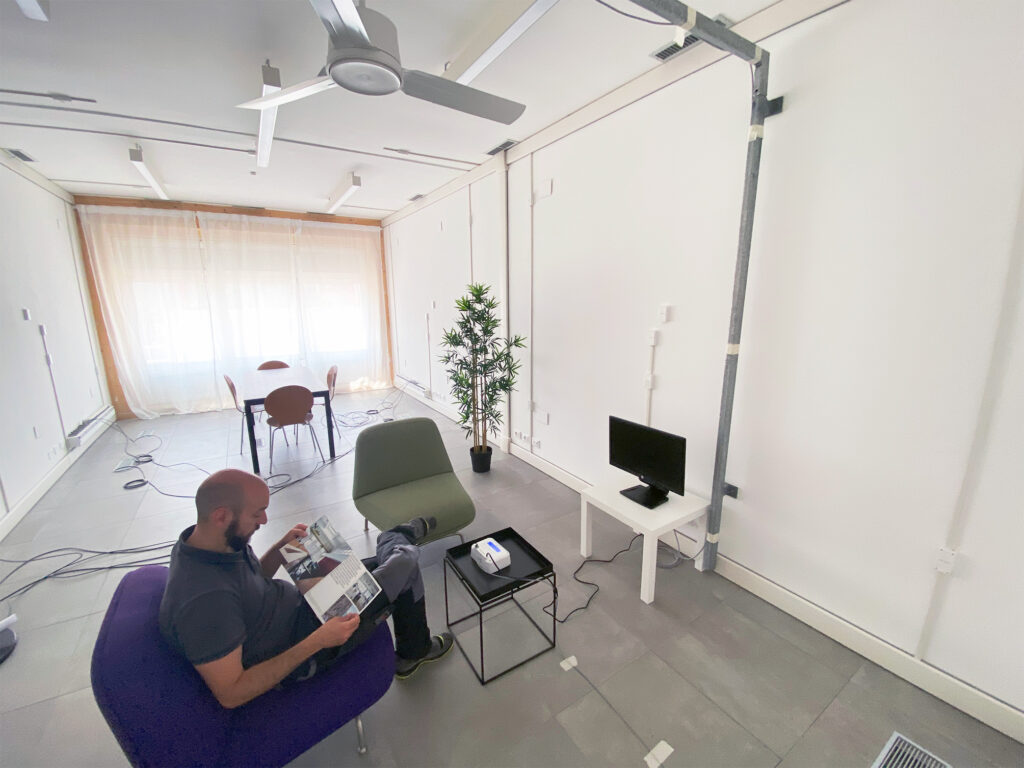Results of a the experimental study validating a novel algorithm for automatic ceiling fan control in residential buildings published in a peer-reviewed scientific journal
The experimental study carried out within the Cultural-E project has shown that automatic ceiling fans can match the comfort of manual fans while using less energy. Published in Energy and Buildings, this research offers solutions for cooling homes in warm climates, while reducing reliance on energy-intensive air conditioning. The study was conducted in collaboration with the Ca’ Foscari University of Venice and Vortice Spa, both project partners.
Testing Approach
The research team tested an innovative automatic control algorithm for ceiling fans through comprehensive environmental chamber experiments:
- Using the Eurac Research’s Façade System Interactions Laboratory, with two identical climate chambers, that allow precise control of temperature and humidity.
- Creating realistic living room environments with standard furniture arrangements, simulating a residential environment.
- Testing across three carefully selected temperatures (27°C, 29°C, and 31°C) to represent common indoor conditions in warm climates.
- Considering different fan settings based on operational mode (manual/automatic with smart algorithm) and flow direction (downward/upward).
- Involving 30 participants to ensure representative results, recruited based on specific criteria.
- Having each participant attend multiple sessions to experience all test conditions, ensuring reliable comparisons.
- Collecting both objective measurements (using sensors and a thermal manikin) and subjective responses (through standardized questionnaires).
This comprehensive approach allowed researchers to isolate the specific effects of the automatic control algorithm and directly compare it with manual operation under identical conditions.
Key Findings
The results showed several important discoveries:
- Validated automatic control: The team successfully tested and validated a new algorithm for automated ceiling fan control specifically designed for residential buildings.
- User perception comparison: The study compared how people felt with automatic versus manual control, and with different airflow directions (downward versus upward).
- Consistent comfort across temperatures: The automatic system maintained comfortable conditions across different temperature ranges from 27°C to 31°C.
- Direction matters: Downward airflow (direct mode) provided reliable thermal comfort, while upward airflow (reverse mode) was less effective.
The control system is ready to be used in existing ceiling fans, offering a practical way to reduce cooling energy use while keeping people comfortable – an important step toward Plus Energy Buildings.
For more information, read the full open-access paper in Energy and Buildings here.


